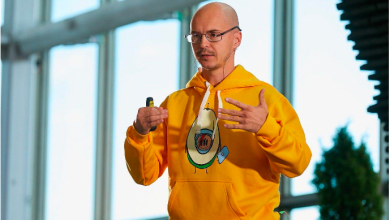From Diagnosis to Recovery: The Journey with a Knee Pain Doctor in Singapore

An injury to the knee can stop any person in their tracks and significantly impact their lifestyle. Knee pain affects people of all ages, and it is a result of conditions like an acute injury, a sudden onset pops knee, or, as with many people, knee pain creeps up over time. In over 30 years of clinical practice, I would assert that knee conditions are the most frustrating and functionally limiting condition to affect a person. Because of the knee’s complexity, it is often difficult to know the cause of the pain without thorough clinical examination. MRIs or X-rays are often not very helpful in providing a diagnosis. It is important to get a clear diagnosis so that appropriate treatment can be provided. The knee pain may be restricting from simple everyday tasks such as negotiating stairs up and down, to more strenuous forms of exercise. This can impact job performance and one’s ability to participate in recreational and competitive sports. For the older person, chronic knee pain can prevent an active retirement or make day-to-day life unbearable. Whatever the cause of knee pain, it is necessary to go through the process of relieving symptoms, correcting the problem, and finally preventing reoccurrence. This journey is what this essay is all about. provides an overview of understanding and treating knee pain in the hope of helping sufferers maximize their well-being. Before we explore the knee pain patient journey, it is important to have a basic understanding of the healthy knee and the mechanics and structure of it in order to appreciate the changes that occur with knee injury or knee osteoarthritis.
Understanding Knee Pain
Knee pain often occurs abruptly as a result of an injury or some kind of strain in the physical aspects of the knee. It may also develop over time due to a medical condition. It is also a common consequence of increasing age. Some common situations leading to knee pain are associated with an incident in which you twist or pivot your leg in the wrong way. An injury to the ligaments is most likely to happen. The Anterior Cruciate Ligament or the ACL is typically injured during sports activities while attempting to change direction rapidly or landing from a jump. The Medial Collateral Ligament or the MCL often results in a blow or a hit to the outer part of the knee, which causes the knee to buckle. The Posterior Cruciate Ligament or the PCL is often injured by a sudden change in direction, a landing during a jump, or a sudden stop. This ligament usually gets injured during car accidents when the tibia is hit while the knee is bent. The function of the ligaments is to attach the bones to one another and to provide stability. An injury to any of these will often make the knee feel very unstable. Another cause for knee pain is due to an injury to the meniscus. The meniscus is a small “c” shaped piece of cartilage in the knee. It acts as a cushion between the shin bone and the thighbone. Each knee has two menisci. An injury to this is often caused by twisting or by lifting something heavy. Older adults may also experience knee pain due to osteoarthritis. This is often called “wear and tear” arthritis. It is the most common type of arthritis and is a degenerative condition that destroys the cartilage in the knee joint. An illness that causes inflammation to the joint, such as rheumatoid arthritis, may also be the cause of knee pain. Lastly, obesity may be the cause of knee pain due to the excessive weight placing extra pressure on the knee joint and cartilage.
Importance of Seeking a Knee Pain Doctor
In our efficient Singapore medical system, the journey from diagnosis to recovery through a knee pain doctor Singapore can be a smooth and relatively swift one. With an array of experience and vast understanding of the various knee problems, a knee pain doctor can quickly diagnose the underlying condition of the knee pain. Diagnosis may involve the use of medical imaging to capture a clear picture of the problem, and it can be easily arranged with the various medical centers in Singapore. Once a clear diagnosis is made, the knee pain doctor can recommend a suitable treatment to tackle the problem. This is where the expertise of the knee pain doctor is important as differing conditions require different treatments. The treatment could range from simple advice on self-care to something more complex like a knee operation. A knee pain doctor can quickly weigh the pros and cons of each treatment and what it entails and recommend the best possible solution. This is beneficial to the patient as it saves much time and agony considering the quick pace of Singaporean society today.
With the various causes and reasons for knee pain, the right treatment and accurate solution can only come about if there is a clear and definite diagnosis of the underlying condition. In order to achieve this, it is important to consider consulting a knee pain doctor. Some might consider it trivial or unnecessary, but consulting a knee pain doctor can be crucial in tackling the issue of knee pain. With the knowledge and experience of a knee pain doctor, solutions and treatments can be sought after with a clear idea of the underlying condition. This is important as it can mean the difference between a successful recovery from knee pain and an unsuccessful one. Consulting a knee pain doctor could also mean accurate advice in the prevention of knee pain, whereby the doctor can advise on the dos and don’ts to prevent a recurrence of the same knee problem or to prevent the onset of a different knee problem. This too is very crucial as prevention is always better than cure.
Diagnosis
Often, a diagnosis is reached after a good history and no further tests are required. An exception would be if the doctor requires further information on the bony or soft tissue anatomy. This would require imaging studies, for example, X-ray, MRI. If the diagnosis is still not clear, the doctor may order a diagnostic anesthetic block to confirm a suspected pain generator. This involves the injection of local anesthetic into a specific joint structure and can provide complete relief of the pain, indicating that that structure is likely to be the pain generator.
Listening to the patient is the most important aspect of taking a medical history. Only with a good history can a diagnosis be reached. This does not mean that the other objective information is not important. The doctor should allow the patient to talk while using directed questions to pick up important points not covered by the patient. He should maintain good eye contact and use appropriate body language to show interest and concern for the patient’s problem. Any language or cultural barriers should be identified and addressed.
Initial consultation and medical history Patients should give a good history of the knee pain complaint. This includes the site, nature, onset of the pain, and any triggering or relieving factors. Any past injuries or previous treatments to the knee joint should be highlighted. Past medical history to exclude any medical illness that can affect the knee joints is important. For example, inflammatory joint disease, peripheral vascular disease. Drug history is to exclude drug-induced gout or any steroid medication which can affect the knee joint. Allergies to any medication should be noted. Family history is important as some knee conditions are hereditary, for example, osteochondritis dissecans.
Initial Consultation and Medical History
The knee pain doctor in Singapore will then proceed to obtain a systematic idea of the current and previous medical illnesses, medications, operations, and allergies in a process known as the review of systems. Often, it is during this phase that seemingly irrelevant past conditions can be identified as a potential contributor to the current knee complaint. Finally, he will ask you about your expectations from the visit and discuss the possibility of your current condition having different treatment options or an uncertain diagnosis and whether you would be comfortable with this.
This is because the doctor has to consider other possibilities which may be contributing to your current problem or different factors that could be the cause of a particular knee condition. For example, pain on the inside of the knee can be the result of a direct blow to the inside of the knee or due to a stress fracture of the tibia or even referred pain of an arthritic hip! To help decide between some of these options, your doctor may also use a pain diagram to help describe the pain.
A complete and detailed history is the cornerstone of a diagnostic process. It can take 20 minutes to more than an hour, depending on the complexity of your complaint. Firstly, you will be asked to fill in a standard patient information form. This typically includes your personal details, occupation, duration of symptoms, how the injury happened, its frequency of occurrence, the aggravating and relieving factors, effect on work and social activities, and the nature and type of pain or discomfort. After this, you will be asked a wide variety of questions, some of which may not appear to be related to your knee problem.
Physical Examination and Diagnostic Tests
However, as much as the information derived from the history would lead to the diagnosis, it is still imperative to perform a detailed evaluation of the patient’s knee problem through a variety of physical examination tests. This will help confirm the diagnosis and determine the underlying cause of the problem, whether it is due to a single or multiple factors. In more complex or unclear situations, the doctor may recommend special diagnostic testing to confirm the diagnosis. For example, an x-ray or a magnetic resonance imaging (MRI) may be performed to obtain more detailed information about the condition of a particular structure within the knee. This will help determine treatment as well as predict an outcome by providing the physician with a clearer picture of the problem.
As for every medical condition, a detailed history of the symptoms and events leading to the current problem is important to help the healthcare provider diagnose the problem. It is also crucial to identify potentially relevant past events, medical and surgical history, and family history, as they may have a significant influence on the choice of treatment. Specific questions during the initial consultation may include how and when the pain and other symptoms began, the duration of the problem and whether it is intermittent or constant, and specific movements or positions that aggravate or relieve the symptoms.
The knee is a complex joint that flexes, extends, and twists, and also supports nearly the entire weight of the body when you perform common tasks like getting in and out of a chair, walking, and standing. It is due to these factors that knee pain is one of the most common musculoskeletal problems that cause people to seek medical help from a knee pain doctor. A proper diagnosis of the underlying problem is most critical to determine the most effective treatment.
Treatment Options
Non-surgically, the two most common treatments are drug therapy and physical therapy. This option is often used for treating symptoms of knee osteoarthritis. Depending on your symptoms and the severity of your symptoms, your doctor may recommend the use of one or more of these drugs for relief of pain and to improve function of your knee.
If, having discovered the risks and benefits, you decide that knee surgery is the right option for you, then your surgeon will need to discuss with you and decide what type of surgery is the best option for your case.
If the problem is more long term, then your knee pain doctor may look to the two most popular treatment options, i.e. surgically and non-surgically. Step one when considering knee surgery is to look at what benefits, risks, and recovery time you may experience if you choose this treatment option. You and your surgeon will want to look at what you can expect to gain from the surgery. Often if the pain in your knee is severe and it is becoming increasingly difficult to walk or climb stairs, or take part in other regular activities, then significant pain relief and improved mobility will be the desired outcome. An increase in knee function to the level where you can return to more intense activities may be the desired outcome for someone with a knee injury who is still quite young. On the other hand, someone with minor knee pain and few activity restrictions may consider that the possible benefits do not outweigh the possible risks and decide that surgery is not the best option for them.
The treatment you receive for knee pain will depend on the cause of the pain and the extent of the damage. The first few steps often involve taking some pressure off the knee by using a walking aid, ice or heat to control the inflammation, and medication. These methods may not technically count as treatment options, however, it is often enough to solve the problem. This is especially true of recent onset injuries and knee pain which is the result of overactivity. In these cases, the above methods, combined with relative rest, may solve the problem by itself.
Non-Surgical Approaches
A common misconception is that if you have knee pain, you should avoid exercise and avoid using your knee. This often leads to more atrophy and weakness of the knee structure, resulting in more pain.
Exercise programs should combine aerobic activities, strength training, and a stretching program. Exercises should be done in moderation, as doing too much can cause more damage to the knee. A well-designed exercise program will help to relieve pain and prevent further injuries.
Exercise and weight loss are especially important for people whose pain is caused by repeated injury, for example, athletes with chronic knee pain due to past injury. Patients with injury-related pain are often reluctant to exercise because they fear that it will cause further damage to their knee. However, inactivity is more detrimental to the knee in the long run than activity.
Exercise and weight loss: The best non-invasive treatment for knee pain is an exercise program and weight loss. For every pound that you are overweight, the knee must absorb an extra 4 pounds of pressure with each step. This increased pressure is a major cause of osteoarthritis knee pain. If you have early osteoarthritis knee pain, a well-designed exercise program is one of the best treatments that you can do.
Non-surgical treatments for knee pain are better tolerated than surgical ones. There are many non-surgical treatments for a painful knee. Often, people try one or a combination of these treatments before they opt for surgery.
Surgical Interventions
Arthroscopic surgery is less invasive. It is the procedure that my surgeon (a knee specialist) eventually advised. The theory is that they would be able to look at the damage in my joint, cut away any loose parts in the knee or repair tears, and then this would help to alleviate the pain. However, the knee doctor was unsure whether this would work as it’s difficult to say whether my pain was due to the wear and tear damage inside my joint or soft tissue pain around the front of my knee. I was somewhat skeptical myself as to how cutting away my “damaged” parts was supposed to help. However, they do seem to know what they are doing, as a recent conversation with a knee pain doctor revealed that microfracture procedures are now done during arthroscopies. This is a procedure that helps to treat the early stages of arthritis. The idea is to cause bleeding in the bone beneath the damaged cartilage, forming a clot, and then a new cartilage to repair the damage. This may be an option should my surgery not actually help, seeing as articular cartilage damage is what has been causing my pain. The alternative surgery would be a total knee replacement, which would be a last resort if my pain was too severe and the damage too great. This procedure would recreate a joint surface with metal and plastic implants to relieve pain and restore function of the joint. This would, in effect, help to restore my quality of life and be rid of the constant pain that has been a great hindrance over the past 18 months. From conversations with patients who have had knee replacements, the results have been varied but all seem to suggest greatly reduced pain and much more functionality in the knee. This would be the necessary requirements for a return to regular training and competition.
Recovery and Rehabilitation
Once the injury has mended, the emphasis of your rehabilitation will shift towards restoring your knee’s strength and mobility. This is particularly important if you have torn your meniscus prior to an older fracture when the damage is likely to be due to degenerative change. By strengthening the muscles around the knee joint, you can help stabilize the joint and prevent future occurrence of meniscal tears or ligament injuries. This will reduce the likelihood of you requiring further surgery later on in life.
Physiotherapy is a key element in your recovery after meniscal surgery. This will generally start six weeks after surgery, when the injury has started to mend. The primary period of physiotherapy is concerned with reducing swelling and supporting the injury to mend. This is achieved through such methods as ice, pressure, and elevation, and gentle range of movement exercises.
Post-Surgery Care and Rehabilitation Program
Rehabilitation after knee surgery is a slow process. The program is aimed at progressively restoring the patient’s knee to normal while providing sufficient strength and mobility to perform normal daily activities. It is done through a structured program under the supervision of a physiotherapist and typically takes several months. Through regular meetings with a physiotherapist, patients can be guided through an individualized rehabilitation program that is designed to help them achieve the highest level of function possible. This may involve a variety of treatments such as manual therapy, heat or cold therapies, electrical stimulation, and/or aquatic therapy. Exercises will be used to help the patient regain flexibility and strength in their knee and eventually progress to more function-based activities. The patient’s commitment to the rehabilitation process is the most important factor in returning to the highest level of function and minimizing future problems with the knee. Failure to comply with the rehabilitation program may result in prolonged problems with the knee and further surgery in the future.
The program could only commence after the operative site has healed. Typically, 4 weeks after surgery, the wound would have healed and the patient would be allowed to start the program if the wound is without any complications. Post-surgery rehabilitation is an important aspect of the patient’s overall knee surgery and recovery. The ultimate goal of post-surgery rehabilitation is to return the patient to normal activities as quickly and safely as possible and to address the patient’s expectations regarding their recovery.
Managing Pain and Discomfort
Throughout this phase, emphasis will also be placed on a gradual increase in cardiovascular fitness. This is typically done through exercises using a stationary bike and deep water running. You can start these activities at 2-3 weeks after surgery. With a good recovery, you can expect to be able to progress to jogging and running at around 8-12 weeks after surgery.
The main focus of this phase is to normalise lower limb strength and function. This will involve a series of specific exercises, often supervised by a physiotherapist. Initially, the aim will be to regain normal quadriceps muscle strength. This is very important as research has shown that people with ongoing quadriceps weakness after knee injury are more likely to develop knee osteoarthritis. At 4-6 weeks after surgery, you can expect to move onto more dynamic strengthening exercises and exercises aimed at improving function and agility.
This phase consists of getting the athlete back to sport or work. This varies from person to person and can take several weeks to many months. Your orthopaedic surgeon will be able to discuss with you the specific end goals for your return to activity.
Restoring Mobility and Strength
Restoring mobility and strength is a process that can be mentally and physically trying. Because of the weakening of the quadricep muscles and the atrophy of muscle tissue above the knee, non-operative and postoperative individuals must work hard to regain the strength in their muscles. The better the strength in the leg, the better the mobility. The better the mobility, the less likely an individual is going to need a future surgery. Therefore, it is essential to work hard on a quadriceps set and straight leg raises to initially regain the strength in the muscles of the thigh. It is essential to avoid high impact exercises such as running, jumping, and high-resistive weight training, which would place excess stress on the joints. This will only compromise the condition of the joint and possibly re-injure the area again. An individual should focus on an exercise that is going to strengthen the muscles around the knee without harming the joint. This can be accomplished with a low-resistance stationary bike. The bike is an effective way to improve both strength and mobility. As the strength in the leg improves and mobility becomes easier, the setting and the resistance of the bike can be increased. This will ensure a greater workout on the muscles and it can help to prepare the individual to return to more strenuous activities.




